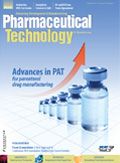Conforming to the IPEC CoA Guide
Past IPEC-Americas excipient qualification committee chairs highlight changes to the IPEC guide on certificates of analysis for bulk excipients.
More than a decade has elapsed since the IPEC-Americas Certificate of Analysis Guide for Bulk Pharmaceutical Excipients (CoA Guide 2000) was published (1). Since then, important changes in the global pharmaceutical industry and regulatory arena have occurred, which have necessitated development of the IPEC Certificate of Analysis Guide for Pharmaceutical Excipients, 2013 (CoA Guide). Among those changes are the formation of the IPEC Federation in 2010, publication of interrelated IPEC documents (2-12) that reference excipient certificates of analysis, increased emphasis on supply chain transparency (13) to protect the lives of patients, and the availability of Product Quality Research Institute (PQRI)-defined options to finished excipient testing (14). The CoA Guide incorporates current best practices from industry and regulatory sources (15).

Juanita Garofalo
The IPEC Federation was established to better coordinate the work of IPEC-Americas, IPEC Europe, IPEC Japan, and IPEC China toward meeting the objectives of their member companies and the industry as a whole. Patient safety is a key driver of all IPEC guides. Because many pharmaceutical excipients now are manufactured, distributed, and used globally, the CoA Guide was bilaterally developed by IPEC–Americas and IPEC Europe. In addition, the CoA Guide will be provided to IPEC Japan and IPEC China for possible adoption and publication in their respective regions. Because the excipient trade is international, the CoA Guide will be an invaluable asset to the worldwide industry.

David B. Klug
The CoA Guide was developed as a collaborative effort by excipient makers, distributors, and users. Members of the IPEC-Americas Excipient Qualification and the IPEC Europe Quality/Regulatory Affairs committees comprised the working group that developed the CoA Guide. IPEC member company issues were identified and addressed in the revision process, such as: absence of analytical method reference, computer software constraints, circumstances when the excipient manufacturer does not need to perform identification tests, legibility, absence of name and address of the original manufacturer, supply chain transparency, and use of terms other than expiration date or recommended re-evaluation date. In addition to IPEC member-company input, FDA has presented their thoughts on CoAs at various conferences and in meetings with IPEC–Americas, and FDA's comments were also addressed during the revision process.

David R. Schoneker
International excipient GMP certification standards include requirements that are consistent with the CoA Guide. The NSF/IPEC 363 GMP for Pharmaceutical Excipients standard (currently under development) defines the minimum required CoA content. Also EXCiPACT Certification Standards for Pharmaceutical Excipients: Good Manufacturing Practices/Good Distribution Practices includes various CoA-related requirements.
The CoA Guide will be provided to the United States Pharmacopeia (USP) for their consideration in revising General Chapter <1080> Bulk Pharmaceutical Excipients—Certificate of Analysis, which is currently based on the CoA Guide 2000. Regulatory agencies and industry organizations such as Sindusfarma in Brazil and SaFyBi in Argentina also will be provided with the CoA Guide as part of an ongoing effort to harmonize excipient expectations worldwide.
Important changes
The CoA Guide details required content and recommended format and includes a model CoA, to be used as an example. It is recognized that existing computer software used to generate the CoA may pose constraints that limit the ability to achieve the recommended format. For this reason, the format of the model CoA provided in the CoA Guide is offered only as an example. It should not be erroneously construed that the recommended format must be followed.
Date format. Because the CoA Guide is of international applicability, an unambiguous date format is required so that dates (e.g., re-evaluation or expiration date) can be clearly communicated. One example of an unambiguous date format offered in the CoA Guide is to use alpha characters to designate the month and four digits to designate the year: DD MMM YYYY (e.g., 14 JUL 2013). This best practice ensures that excipients used in the manufacture of drug products meet specification requirements at time of use and that confusion does not lead to use of expired excipients.
Original manufacturer. The original manufacturer and manufacturing site should be identified if different from the supplier and supplier location. Specifically, the name and address should appear directly or by reference (i.e., using a code) on the CoA.
Regardless of whether or not a code appears on the CoA, the excipient user is responsible for knowing the name of the original manufacturer and the address of the original manufacturing site for every lot received. Where a code is used, the excipient supplier is responsible for defining the code to the excipient user, upon request. Such information may require a confidential disclosure agreement (16).
In addition to being a legal document and the basis of the excipient manufacturer's certification that the excipient will continue to meet the specification up to the re-evaluation or expiration date, the CoA is a crucial element of the overall supply-chain controls that excipient manufacturers, distributors, and finished drug manufacturers should have in place. To facilitate traceability to the excipient manufacturer, inclusion of the name of the original manufacturer and address of the original manufacturing site or an appropriate code on the CoA was emphasized in discussions that IPEC-Americas had with FDA.
Verification of authenticity. The excipient user should periodically verify the authenticity and validity of the CoA. This can be efficiently accomplished during a supplier audit or otherwise by sending the CoA to the issuer to verify that it is authentic. The frequency of such verification may be based on risk assessment, which takes into consideration the reliability of the excipient manufacturer and the supply chain involved.
The CoA should include the name and title of the person who authorized it. A computer generated CoA, where proper controls are in place at the excipient maker, provides an equivalent or better degree of assurance that the CoA is appropriately authorized than an original hand-signed document. There is no legal requirement to have a hand-signed CoA in most countries provided that appropriate controls are in place for an alternative computer-generated signature process.
If a distributor issues a CoA on their letterhead, their CoA should be traceable back to the original manufacturer's CoA. Also, the distributor's CoA should include the original manufacturer's name and location or code (if used).
PQRI defined options to finished excipient testing. The CoA Guide 2000 included provisions for "reduced frequency testing" by the excipient maker. Since the CoA Guide 2000 was issued, the Product Quality Research Institute (PQRI) Joint Position Paper on Pharmaceutical Testing and Control Strategies was published. As reported in this position paper:
"In a post-workshop meeting, FDA representatives stated that it considers the practice of skip-testing not to be compliant with cGMPs because for those lots that are not sampled and tested, there is a lack of assurance that the finished excipient material will meet all of its specifications. FDA believes that if an attribute for a finished raw material has required criteria, there must be some measurement or test of the material on each lot to ensure that the criteria are met" (14).
FDA stated in their response to the PQRI article and in subsequent discussions with industry that in-process testing can be used in place of finished excipient testing to determine compliance to a specified test parameter and to release an excipient product as meeting the appropriate specifications, provided the excipient manufacturer has clearly identified/documented the in-process "measurement" that directly relates to the specified test parameter and the in-process test clearly demonstrates that each batch of excipient would pass the requirement, if tested. This type of assurance can be obtained during an audit of the supplier. Without assurance of the correlation of in-process testing with a finished excipient test result from (e.g., supplier audits), the user is required to perform any test that is not performed by the excipient maker on each lot.
Based on FDA's comments, a user should no longer consider data from periodic (skip-lot) testing by the excipient manufacturer as sufficient to release the excipient for use in a drug product, regardless of the amount of historical data that may exist. This position is a paradigm shift for the pharmaceutical industry. Many companies use reduced testing programs and rely on their supplier's CoA data and, in the past, have accepted supplier statements that the specifications for a particular test were certified through the use of in-process or skip-lot testing. In addition, historically, pharmacopeias such as USP have allowed for this type of approach to be used by excipient manufacturers in their general notices and ICH Q6A has allowed for skip-lot testing of the drug product and drug substance. However, based on recent comments from FDA, they will not allow users to rely on in-process measurements to justify a specified test parameter without documented evidence (e.g., site audits) to demonstrate that appropriate procedures are in place to assure compliance. Although historically excipient users may not have established this level of documented evidence, but rather, may have simply relied on "un-justified/un-confirmed" data in their reduced testing programs, FDA made it clear during the PQRI discussions that this is now considered inappropriate (14). "According to FDA representatives, an appropriate determination to ensure that each lot conforms to appropriate specifications could involve some combination of the following approaches:
1. End-product testing
2. In-process testing
3. Continuous monitoring of an attribute with statistical process controls
4. Documented rationale that, based on the method of manufacture, the test attribute cannot be present and therefore the test is not applicable (e.g., residual solvents)" (14).
The CoA Guide refers to bullets 2–4 (above) as "other than finished excipient testing" and results derived from other than finished excipient testing should be clearly indicated in the CoA. For example, the test name can be footnoted to indicate the test result is obtained from other than finished excipient testing.
The CoA Guide also makes reference to ICH Q6A in this section, which allows for skip-lot testing of the drug product and drug substance. As mentioned above, FDA has additional expectations related to the use of supplier skip-lot testing results listed on a CoA for determining raw material compliance by pharmaceutical companies. FDA has stated that skip-lot testing by an excipient manufacturer by itself does not provide sufficient data for excipient users to justify reduced testing upon receipt and this lack of data was the basis of the PQRI discussions. Appropriate skip-lot testing can provide the basis, however, for an excipient manufacturer to certify compliance to a specification because the excipient manufacturer has significant process knowledge and understanding beyond what is available to the user. This is allowed for in the USP General Notices chapter, and there is no requirement for the excipient manufacturer to test each batch for all tests listed in their specifications when other controls can demonstrate ongoing compliance.
Verifying test results and measurements for specific parameters. Before releasing an excipient for use in the manufacture of a finished drug product, it is the excipient user's responsibility to ensure that a conforming test result was obtained for each specification parameter either by sampling and testing the finished excipient for each parameter, using qualified supplier test results from the CoA, or relying on "other than finished excipient testing" to support compliance to a particular parameter where qualified as noted above. The excipient CoA should identify these "other-than-finished excipient testing" results. Excipient makers should consider the impact on excipient users of any skip lot or "other-than-finished excipient testing" that is being used for product release at their site and inform excipient users accordingly.
Before accepting any test results from the CoA, the excipient user must qualify the excipient maker to ensure that the excipient is manufactured and tested in a manner consistent with applicable excipient GMP guidelines and excipient user requirements. The qualification should include a site audit of the excipient maker or supplier who provided the CoA by either the excipient user or a qualified third party to verify that the data provided on the CoA are generated using appropriate methods and are reliable. Periodic reassessment is also necessary to verify that the excipient maker remains qualified.
Whenever an excipient user relies on CoA data in lieu of incoming testing, it is suggested that an appropriate quality agreement be in place between the excipient maker and excipient user that clearly defines the responsibilities of each party. In such cases, the excipient maker serves, in essence, as a contract laboratory for the excipient user.
Analytical method reference. It is necessary that the excipient user know the analytical methods used by the excipient manufacturer to test each lot when CoA data are used for batch release. Analytical method references should appear on the CoA or be linked to a specification document so the analytical method used for each test is clearly communicated to the user. In the case where the analytical method is included on the linked specification instead of the CoA, the excipient user must be provided with the specification document.
Identification testing. USP General Notices 5.40 Identity states "A compendial test titled Identity or Identification is provided as an aid in verifying the identity of articles as they are purported to be, e.g., those taken from labeled containers, and to establish whether it is the article named in USP–NF" (17). Furthermore, 21 CFR § 211.84(d)(1) states "At least one test shall be conducted to verify the identity of each component of a drug product. Specific identity tests, if they exist, shall be performed" (18). Similarly, for excipient users whose drug product is marketed in Europe, the EU legislation states, "The identity of a complete batch of starting materials can normally be ensured only if individual samples are taken from all the containers and an identity test performed on each sample (19)."
There has been confusion within the industry regarding reporting of identification tests on the CoA of excipient products. The IPEC CoA Guide clarifies that this reporting is not required when an excipient manufacturer has other control procedures in place that provide adequate assurance that their product will meet the identification test, if tested. In additon, the user must perform an identification test on every batch received regardless of whether the supplier has performed the identification test or not.
Summary
In summary, the CoA Guide is expected to be a crucial tool for manufacturers, distributors, and excipient users by providing clarity on additional regulatory and industry requirements related to supply chain transparency, authenticity of the CoA and testing requirements to name a few and by providing a suggested format that includes all necessary information.
Juanita Garofalo is global manager labeling and packaging at Avantor Performance Materials.
David B. Klug, MS, is senior manager, GMP audit at Sanofi and IPEC-Americas Chairman.
David R. Schoneker is director, global regulatory affairs at Colorcon.
References
1. D. Schoneker, Changing the Supply-Chain Controls for Excipients –Part I: The IPEC-Americas Certificate of Analysis Guide for Bulk Pharmaceutical Excipients, Pharm.Tech. (June 2000).
2. IPEC-Americas, Excipient Master File Guide (2004), ipecamericas.org.
3. IPEC-Americas and IPEC Europe, Excipient Pedigree Position Paper (2009), ipecamericas.org.
4. IPEC-Americas and IPEC Europe, Excipient Stability Program Guide (2010), ipecamericas.org.
5. IPEC-Americas and IPEC Europe, Good Distribution Practices Guide (2006), ipecamericas.org.
6. IPEC-Americas, Good Distribution Practices Audit Guide (2011), ipecamericas.org.
7. IPEC-Americas, IPEC Europe, and the PQG, Good Manufacturing Practices Audit Guide (2007), ipecamericas.org.
8. IPEC-Americas, IPEC Europe, and the PQG, Good Manufacturing Practices Guide (2006), ipecamericas.org.
9. IPEC-Americas and IPEC Europe, Qualification of Excipients for Use in Pharmaceuticals (2008), ipecamericas.org.
10. IPEC-Americas and IPEC Europe, Quality Agreement Guide and Template (2009), ipecamericas.org.
11. IPEC-Americas, Significant Change Guide (2009), ipecamericas.org.
12. IPEC, International Pharmaceutical Excipient Council Glossary (2010), ipecamericas.org.
13. A. Falk, PhD, Pharm.Tech. 34(3) (Mar. 2010).
14. B. Carlin et al., Pharm. Tech. 31 (9) (Sept. 2007).
15. PQG PS 9100:2002 Annex C Certificates of Analysis; WHO Technical Report Series, No. 902 & No. 908; UK Guidance on Certificates of Analysis (from Orange Guide).
16. Note: It is hoped that in the future, all excipient makers and excipient users will realize the benefits of establishing a long-term confidential disclosure agreement during the supplier qualification process.
17. USP, USP 35 General Notices, 5.40 Identity
18. 21 CFR 211.84(d)1
19. EU Legislation–Eudralex Vol 4: Good Manufacturing Practice Guidelines, Chapter 6 Quality Control, Annex 8 Sampling of Starting and Packaging Materials (2006).
Disclaimer: The views expressed in this article are those of the authors and do not necessarily reflect that of their employers.

Pharmaceutical Tariffs Are Imminent: How Industry is Bracing for Impact
April 16th 2025On April 14, 2025, the Trump Administration launched a national security-driven investigation into pharmaceuticals, a move that will likely result in tariffs being placed on pharmaceutical drugs, ingredients, and other components that are imported from outside of the United States.